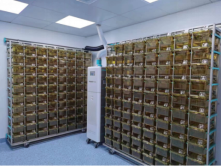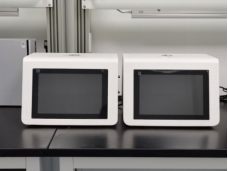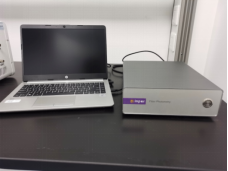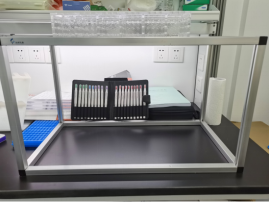The Experimental Animal Facility at the Songjiang Research Institute, also known as the "Animal Facility," is a subsidiary entity of the Institute. Its primary function is to offer technical support services to scientists. These services encompass experimental animal breeding, biological purification, skill training, animal surgery, and the creation of animal disease models.
The Animal Facility operates two primary locations: the Animal Facility in Building 16 of the Songjiang Central Hospital and the Animal Facility within the College of Agriculture and Forestry. The latter is anticipated to house up to 1,000 cage spaces, and it's outfitted with state-of-the-art equipment such as independent ventilation cages (IVCs), a pulsating vacuum sterilizer, a cage changing station, and a high-throughput xenon light transmission window to facilitate optimal mouse breeding conditions. Conversely, the facility in Building 16 features specialized rooms for mouse feeding, as well as behavioral laboratory, surgical, and imaging zones. It's further equipped with crucial instruments, including a biosafety cabinet, brain stereotaxator, small animal respiratory anesthesia machine, and a living imager. Notably, the behavioral laboratory possesses sophisticated tools for monitoring mouse movement, emotion, pain, etc., offering a comprehensive environment for brain science experiments.
The teams within the Animal Facility are divided into feeding and decontamination, veterinary care, facility maintenance, animal modeling, and administration. Every member of the facility is dedicated to upholding the highest standards of welfare and ethics concerning experimental animals. Their goal is to consistently supply scientists with top-quality experimental animals and unparalleled technical support services.
General Guidelines for Animal Facility
Research groups must apply for cage space in alignment with their research plan and maintain strict control over the allocated space.
Each cage can accommodate up to 5 mice, provided each mouse weighs no more than 25g.
Breeding cages can hold a maximum of two adult rats along with one litter of newborn rats.
Newborn rats must be weaned by their 21st day.
Behavior Room Instrument Usage Rules
Reservations are required for instrument use.
Users must undergo appropriate training prior to operating any instrument.
Users are responsible for logging their usage time and the status of the instrument. Any issues or malfunctions should be reported promptly.
 Mouse feeding cage and its air purification device.
Mouse feeding cage and its air purification device.
 A stereotaxic injection instrument used for virus injection and optical fiber embedding in specific brain regions of mice.
A stereotaxic injection instrument used for virus injection and optical fiber embedding in specific brain regions of mice.
 The instrument is a photogenetic device.
The instrument is a photogenetic device.
 The instrument is a three-color optical fiber recording for in vivo calcium signal acquisition.
The instrument is a three-color optical fiber recording for in vivo calcium signal acquisition.
 The instrument is a mouse pain measuring frame and fiber for the mechanical pain detection of mice.
The instrument is a mouse pain measuring frame and fiber for the mechanical pain detection of mice.


